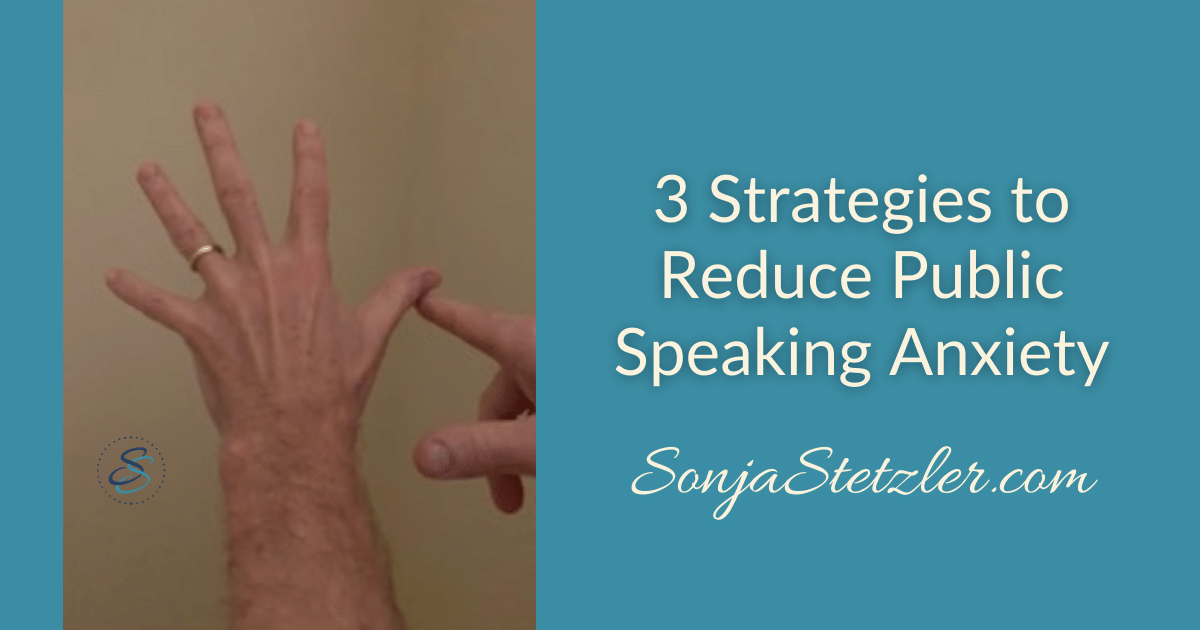According to the National Social Anxiety Center, anxiety over public speaking affects 73% of our population.
Speaking in front of an audience, whether in-person or virtual, puts us in a vulnerable position and our brain perceives we are in danger. As a result of this “threat”, our bodies produce hormones that prepare us for “flight or fight”. Many of us feel those physical reactions in our body: sweaty palms, dry mouth, faster heartbeat, shallow breathing.
Here are three strategies that can help to reduce the anxiety that public speaking can provoke.
I suggest working with all 3 strategies for the best result.
Deep Breathing
There has been much research to demonstrate that deep breathing helps to reduce stress. One of my favorite deep breathing exercises is one called Trace Your Hand. Hold out your non-dominant hand with your palm facing the other side of the room. With your index finger on your dominant hand, start tracing your non-dominant hand starting with your thumb. Inhale as you trace upwards on each finger, and exhale as you trace downward. This will give you five deep breaths. Your exhale is what connects to your nervous system to give you the feeling of calmness.
I like this exercise as it is physical, it helps with focus and centering, and it provides an easy and structured way to engage in deep breathing before you deliver a presentation.
Shift in Mindset
Too often before a presentation, we are thinking negative thoughts of being judged or criticized by our audience. We are self-conscious and our thoughts are focused inward on us. When we intentionally focus on our audience and how we are in service of our audience, our thoughts are focused outwards.
Speaking to an audience is never about the speaker; it’s all about the audience and how we are serving THEM. The shift in our focus can reduce our anxiety. And honestly, they are not thinking about us. They are processing what we are delivering and how it applies to them.
Practice
If you have ever been to a theater production, you know that the actors did not walk on stage on opening night for the first time and perform. They have rehearsed for weeks in advance of opening night. The same principle applies to delivering a presentation. One must practice or rehearse before delivering a presentation to ensure a solid performance.
The speakers who make it look so easy are the ones who have invested their time in practice and rehearsing so that their performance appears to be flawless from the audience’s perspective. Rehearsing builds confidence with content delivery, and as one’s confidence rises, speech anxiety is reduced.
Integrating these techniques into your speaking ritual not only helps reduce speech anxiety, they can elevate your performance as a speaker.

